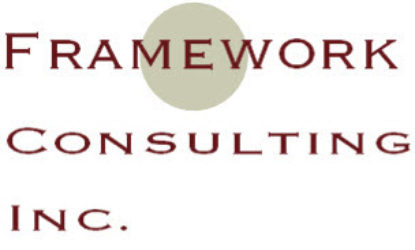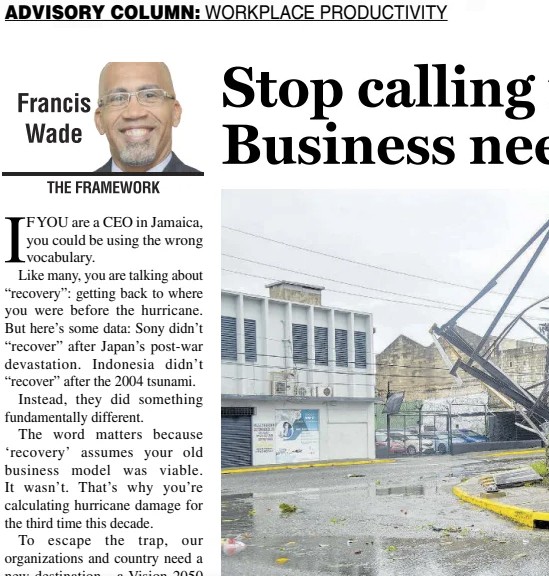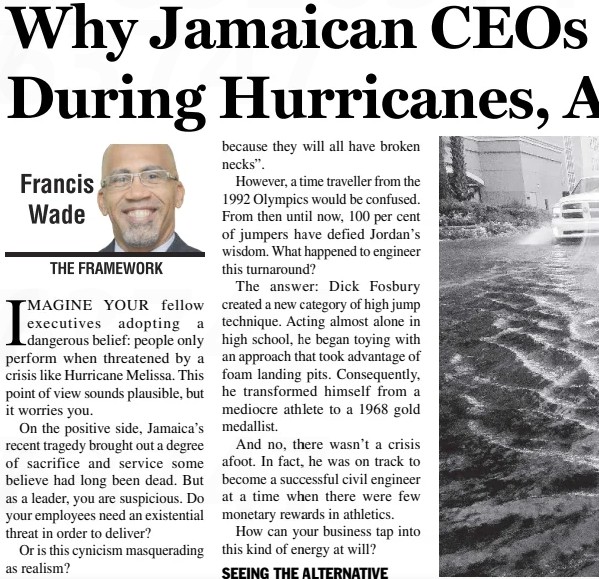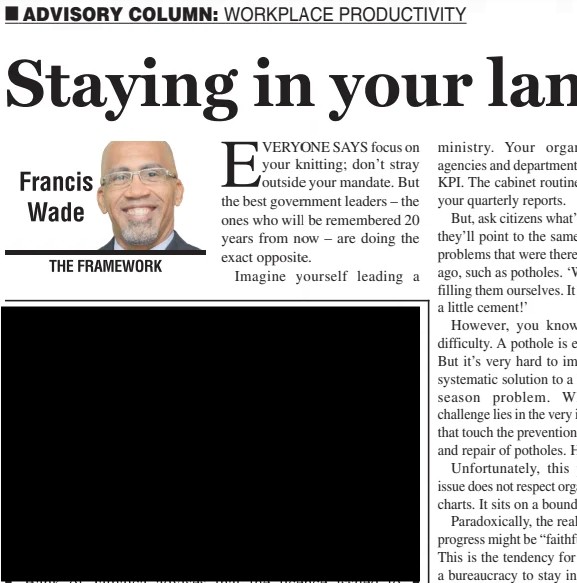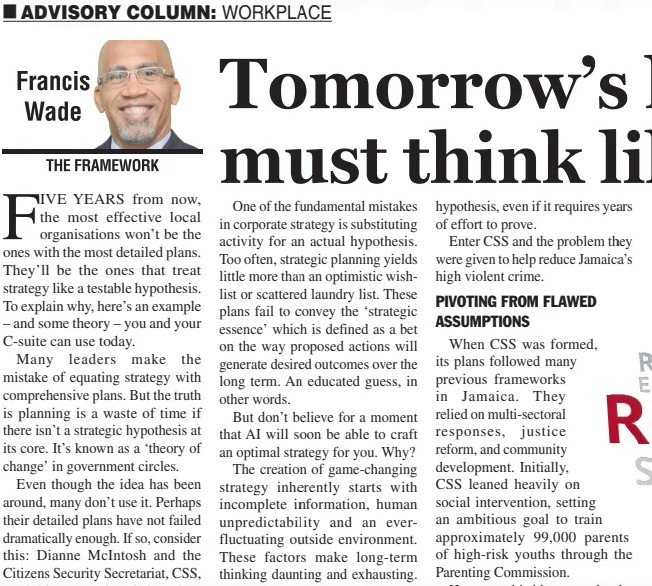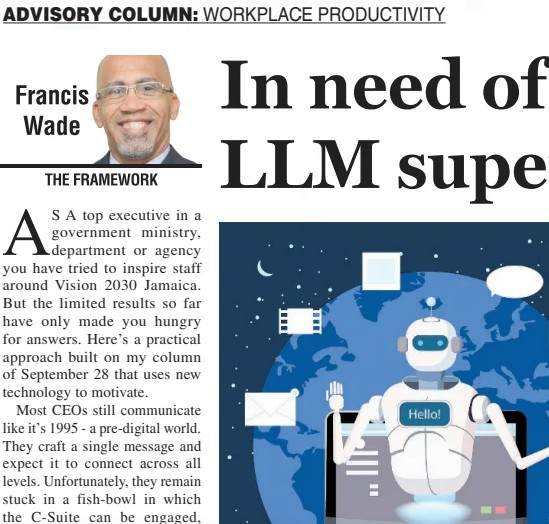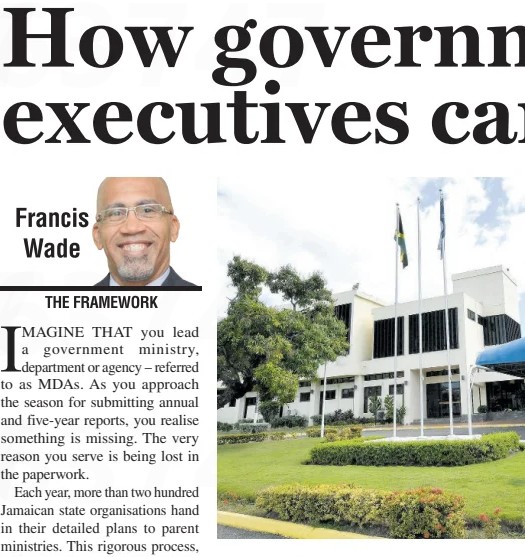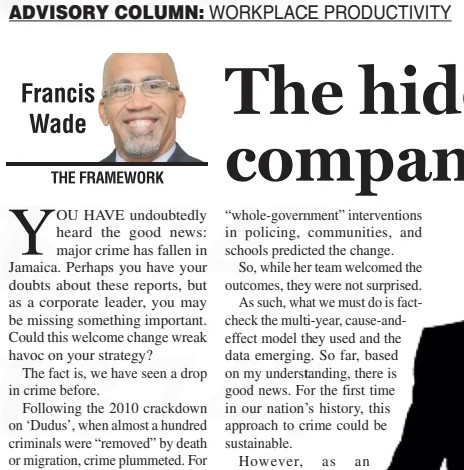The conventional wisdom says: stay focused, deliver on your core responsibilities, don’t overstep. But the leaders who’ll be celebrated a generation from now are ignoring that advice entirely.
Picture this: You’re running a major public sector organization. Every performance indicator is green. Your board loves your quarterly updates. Senior leadership regularly commends your results.
Yet when you walk through the communities you serve and talk to regular people, they describe the same chronic problems that existed half a decade ago.
“Nothing’s really changed,” they tell you. “The issues we complain about? Still there.”
Here’s what you know that they don’t: Many of these problems have simple tactical fixes. But implementing systematic, lasting solutions? That’s brutally difficult.
Why? Because the real challenges don’t respect organizational boundaries. They sprawl across multiple departments, agencies, and jurisdictions. Solving them requires something most job descriptions never mention: delivering results beyond your formal authority.
When Excellence Becomes the Enemy
The most dangerous trap in public sector leadership isn’t outright failure. It’s what we might call “compliant mediocrity.”
This happens when leaders optimize for their own metrics, hit their assigned targets year after year, and consider themselves successful—within narrow confines.
But something’s missing. Despite their achievements, they feel perpetually drained. Their work doesn’t inspire. While they collect their paychecks, their legacy quietly dissolves because the work that truly matters doesn’t sit neatly inside their control. Instead, it lives in the uncomfortable spaces between organizations.
These boundary-spanning problems—crime, economic stagnation, infrastructure decay, climate resilience—remain unsolved because government systems reward predictable, controllable ambitions over transformative ones.
A small group of public sector leaders, however, have discovered a different path.
The Cross-Agency Coordination Model
Consider a successful example: a national security coordination body designed to span multiple stakeholder organizations. Rather than operating as a single agency, it functions as a coordinating mechanism that brings together defense chiefs, police commissioners, anti-corruption directors, and senior civil servants in quarterly sessions that enforce collaboration and mutual accountability.
This sounds impossibly complex. Bureaucratic chaos waiting to happen.
The secret ingredient? A secretariat led by someone with deep institutional knowledge—decades of service across multiple ministries, connections throughout the civil service, and the credibility to cut through red tape.
Leaders like this see past surface-level problems. They understand that when infrastructure fails in your neighborhood, it’s rarely one agency’s fault. They recognize these as complex challenges that cross organizational boundaries and demand cooperation.
Sometimes, this requires personal trust built over years that transcends hierarchy and formal mandates.
Here’s what these cross-boundary initiatives do differently:
Begin with citizen outcomes, not organizational outputs. This means multiple stakeholders working simultaneously toward shared final results, regardless of difficulty. Think of national development frameworks that require whole-of-government approaches.
Develop shared strategic hypotheses. These groups craft testable theories about what might work, and every stakeholder buys into the same hypothesis. This alignment is invisible but essential.
Create distributed ownership. Few thoughtful observers believe complex social problems can be solved by single agencies. For example, the pipeline that leads people into the criminal justice system involves education, social services, mental health, employment, and community development—not just law enforcement.
Deploy data surgically. By targeting specific areas and measuring them with modern tools, these coordination bodies receive rapid feedback and can adjust quickly.
This list isn’t exhaustive. But the fundamental shift is enormous: committing yourself to citizen outcomes that can’t be mapped to your organization chart or short-term results requires courage.
Three Immediate Actions
1. Redefine How You Measure Success
Stop asking: “Did I meet my targets?” Start asking: “What outcome do citizens actually need—and who else must I engage to deliver it?”
This single reframe changes everything.
2. Cultivate One Strategic Partnership This Quarter
Identify the single senior leader whose work intersects with your biggest bottleneck.
Don’t request a generic “collaboration meeting.” Instead, bring value to the table: “I have data on [specific challenge] that affects both our organizations. Can we review it together?”
This mirrors the trust-through-transparency approach used by successful cross-agency bodies.
3. Launch One Cross-Boundary Experiment
Select one problem requiring multi-agency partnership. Design a small, 90-day pilot with concrete metrics.
Approach your leadership and secure explicit permission to “test and learn” across boundaries they may guard carefully.
For instance: “Can we reduce youth reoffending by 15% if we coordinate case management across education, justice, and corrections for 20 young people?”
The Memorial Test
Two decades from now, nobody will remember your Q3 performance ratings.
They’ll remember whether violent crime decreased in their city. Whether young people found pathways to employment. Whether communities became more resilient to natural disasters.
You face a choice: operate within comfortable boundaries and deliver forgettable results, or cross organizational lines and create something that endures.
The question isn’t whether you can collaborate across silos. It’s whether you’re willing to be remembered for something beyond meeting targets.
Six Strategic Prompts for Cross-Silo Leadership
Prompt 1: Define Your True Impact Zone
“I lead [your organization]. Our formal mandate covers [state scope]. But the outcomes stakeholders actually need are [list 3-5 challenges].
Analyze: What’s the highest-impact outcome I should pursue that requires collaboration beyond my current organizational boundaries? Map which other agencies must participate and why.”
Prompt 2: Chart Your Collaboration Landscape
“I want to address [specific cross-cutting challenge, e.g., chronic homelessness or youth workforce development].
Create a stakeholder map showing: (1) Which organizations control relevant budgets, authority, or data, (2) Each organization’s current incentive structure, (3) Where natural friction points exist, (4) Which ‘connector’ leaders I should approach first.”
Prompt 3: Build Your First Strategic Experiment
“Using evidence-based delivery frameworks, help me design a testable 90-day strategic hypothesis for [boundary-crossing problem].
Include: (1) The specific measurable outcome we’re testing, (2) The minimum viable partnership (which 2-3 organizations must coordinate), (3) Key assumptions we’re validating, (4) Early warning indicators that signal we need to pivot, (5) How to present this as a ‘safe-to-fail’ experiment to leadership.”
Prompt 4: Draft Your Trust-Building Approach
“I need to engage [counterpart at another organization] about collaborating on [challenge]. They’re likely skeptical because [explain context: past failures, territorial concerns, resource limits].
Write a 200-word email or meeting opening that: (1) Leads with evidence they care about, (2) Frames the challenge as shared rather than ‘my request,’ (3) Proposes a low-risk exploration, (4) Acknowledges their constraints to build trust.”
Prompt 5: Navigate the ‘Not My Responsibility’ Response
“I’m encountering resistance to cross-boundary work. The objections are: [list specific pushback like ‘that’s outside my role,’ ‘we lack capacity,’ ‘that’s Agency X’s territory’].
Provide: (1) A reframe for each objection that shifts from ‘mandate compliance’ to ‘stakeholder outcome delivery,’ (2) Examples from successful cross-agency coordination that show how leaders navigated similar resistance, (3) A compelling case for how this enhances (not threatens) institutional reputation.”
Prompt 6: Track Progress Across Organizational Lines
“I want to monitor progress on [cross-cutting outcome] involving [list 3-4 organizations]. Currently, each tracks different metrics that don’t create a coherent picture.
Design: (1) A simple dashboard with 4-6 shared metrics all organizations can feed, (2) A quarterly reporting rhythm that minimizes bureaucratic burden, (3) How to make this data transparent for public accountability without making organizations defensive.”
Note: Expect targeted insights specific to your context and constraints.
This is a longer version of my recent column in the Jamaica Gleaner.
